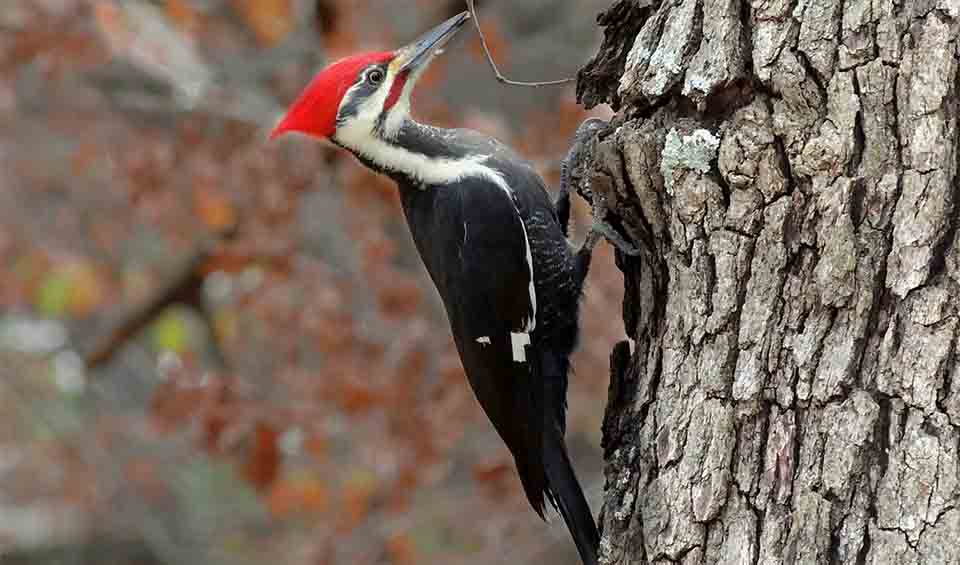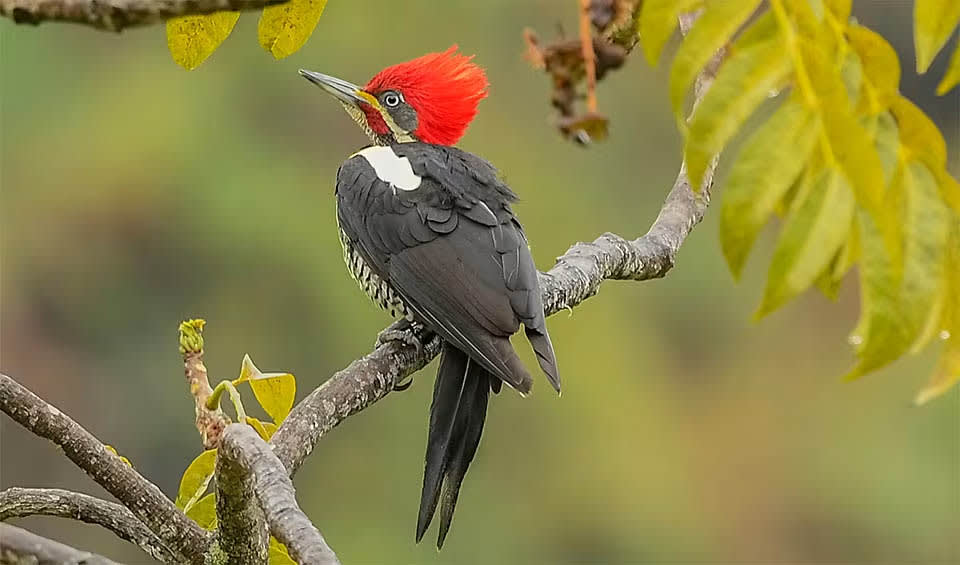Dryocopus
Use their sharp beaks to carve out big holes in trees, not just to find bugs but also to make their homes
This genus includes some of the most striking and powerful woodpeckers in the world. These birds are known for their size, vivid coloration, and remarkable wood-pecking abilities, making them a notable group within the woodpecker family. Members of this genus are found across various continents, including North America, Europe, Asia, and South America, demonstrating a wide adaptability to different forested environments.
One of the defining traits of these woodpeckers is their large size, making them some of the biggest woodpeckers in their respective regions. They generally feature bold, contrasting color patterns—typically black bodies with prominent white markings, and in many species, males display bright red or yellow on their heads. This vivid coloration not only adds to their visual appeal but also plays a role in mating displays and territorial disputes.
Dyrocopus woodpeckers are renowned for their powerful beaks, which they use to chisel into hard wood to access insects, particularly beetle larvae, which make up a large part of their diet. This behavior is crucial not only for feeding but also for nest building. They create large holes in trees to form nesting cavities, a task that involves significant strength and persistence. The sound of a *Dryocopus* woodpecker at work can be heard from a great distance and is often used by birdwatchers to locate these elusive creatures in dense forests.
Behaviorally, Dryocopus woodpeckers are mostly solitary outside of the breeding season. They are known for being territorial and will vigorously defend their feeding and nesting areas from other birds. The territories are maintained by loud calls and drumming, which also serve to attract mates.
Species in this genus
Lineated woodpecker
With its strong, sharp beak, it’s a master at pecking holes into trees to find tasty bugs hiding inside


